- Skip to primary navigation
- Skip to main content
- Skip to primary sidebar
Teaching Expertise
- Classroom Ideas
- Teacher’s Life
- Deals & Shopping
- Privacy Policy

Safeguarding children and young people on school trips
June 21, 2013 // by Admin
Whether you are taking children off premises to visit the local museum or taking young people away for a full five days, you need to ensure that every aspect of your planning incorporates safety and protection planning
The governing body, or in some cases the LA, holds responsibility for the health and safety of staff and pupils going on a school trip and is required to carry out a comprehensive risk assessment for all activities. The task of carrying out a risk assessment is, however, usually delegated to the headteacher.
A group leader must be appointed for all school trips. The group leader holds responsibility for supervising and conducting the visit and it is usually the group leader who carries out the risk assessment. Ensure that the group leader has been adequately trained to assess risk. If you are in doubt, check with the LA health and safety officer about the level of training needed and where it can be accessed. The group leader may need to carry out a pre-trip visit to think through what needs to be considered when they carry out the risk assessment.
The risk assessment will need take into account both health and safety issues and child protection issues.
Health and safety issues The DfES and the Health and Safety Executive offer the following advice for assessing risk:
- Identify the dangers: which are general and which are site specific?
- Identify who may be at risk.
- Consider the likelihood of the risk materialising, and its severity. Put precautions in place.
- Record everything, and identify control measures.
- In the case of visits to outdoor pursuits centres, check that the centre has its own health and safety policies and advice in place and ensure that the centre’s staff are suitably qualified.
- Ensure equipment for activities are both suitable and safe.
- Assess any likely difficulties that might be encountered in the event of an emergency.
Further detailed information can be obtained by reading Health and Safety of Pupils on Educational Visits: A Good Practice Guide (HASPEV) and A Handbook for Group Leaders, which is a supplement to it. See also Health and Safety: Responsibilities and Powers and the other supplements to HASPEV: Standards for LEAs in Overseeing Educational Visits and Standards for Adventure.
These can all be downloaded from: www.teachernet.gov.uk/wholeschool/healthandsafety/visits
Risk assessment in respect of child protection should cover the adults who will be accompanying children and young people, the adults that they will meet at centres they visit and or places they will stay and the risks posed by individual children and young people to others.
Parents are often asked to volunteer to accompany children on day trips. It would be unreasonable to expect parents to undergo CRB checks and not at all practicable. However, schools do need to consider how volunteers are used and where possible parents should not be left alone with pupils.
Where the trip involves an overnight stay, volunteers should be asked to undergo a CRB check.
Centres providing activities for children should be asked to provide evidence that their staff have been checked.
Centres open to all members of the public should be asked what ‘child safe’ policies they have in place. Children should not be left unsupervised in any centre that is not able to provide evidence of appropriate checks.
Unfortunately some children are known to pose considerable risk to other pupils. Where it is known that a pupil has subjected another child/young person to abuse, an individual risk assessment should be carried out. While it is recognised that such a young person may benefit from being included, and in some ways it may be even more beneficial to them than for other pupils, very careful consideration needs to be taken to the risk to others.
This is particularly important where the trip involves overnight stays. If the pupil has sexually abused others can they be adequately supervised? Can they have a separate bedroom for instance? Can staff ensure one-to-one supervision for the duration of the trip? In some cases schools may have to decide that a young person cannot go on the trip. Where this is the case make sure that the pupil and their parents are properly informed of the decision and the reasons for it.
Supervision Schools need to decide on staff-pupil ratios (some LAs set their own levels of supervision for trips) .Consider ratios in respect of the age of the children, whether any of the children have special needs, the nature of the trip and activities, the experience of those accompanying pupils and the duration of the trip.
Informing parents Make sure parents are given as much information as possible about the nature of the trip and the activities that are likely to be on offer. Parents may raise concerns about particular aspects of the trip and may need reassurance on safety issues. For longer trips it is useful to invite parents to a meeting to address these issues.
Travel Make sure that travel arrangements are subject to risk assessment. Road travel is considered the most serious hazard on any school trip.
- Who will transport pupils and are they safe?
- Buses and coaches must have seatbelts.
- Children must be supervised throughout the period of travel.
- Drivers should never be expected to supervise.
Water Next to road travel, taking pupils to coastal areas or rivers is considered the most hazardous activity.
- Check the staff to pupil ratios advised by your LEA.
- Check if any pupils cannot swim and increase the number of times you do head counts.
- Check weather conditions and changes in conditions throughout the duration of the trip.
- Make sure that supervisors are aware of the specific precautions needed on trips to coastal areas and rivers.
Talking to pupils Talking to pupils about the proposed trip is essential. Pupils may have very individual concerns about the trip or specific aspects of the trip. Stress the importance of safety to all pupils. Explain why you are going to do things like head counts, checking equipment, asking them to be quiet while you give instructions, etc.
Emergency planning Using the completed risk assessment try to ensure that emergency plans are in place in case of:
- bullying or abuse between pupils
- pupils going missing
- pupils making disclosures of abuse.
Supporting staff Finally make sure staff are able to take sure breaks if they need to. Escorting and supervising children offsite brings its own stresses and staff can feel overwhelmed by the responsibility.
For some staff it may be a new experience and to have children under their care and control for 24 hours can be particularly trying, especially if they are expected to manage a particularly unruly child. Make sure such staff are well supported; after all we hope they will volunteer again next year!
Cookies on GOV.UK
We use some essential cookies to make this website work.
We’d like to set additional cookies to understand how you use GOV.UK, remember your settings and improve government services.
We also use cookies set by other sites to help us deliver content from their services.
You have accepted additional cookies. You can change your cookie settings at any time.
You have rejected additional cookies. You can change your cookie settings at any time.
- Department for Education
Health and safety on educational visits
Published 26 November 2018
Applies to England

© Crown copyright 2018
This publication is licensed under the terms of the Open Government Licence v3.0 except where otherwise stated. To view this licence, visit nationalarchives.gov.uk/doc/open-government-licence/version/3 or write to the Information Policy Team, The National Archives, Kew, London TW9 4DU, or email: [email protected] .
Where we have identified any third party copyright information you will need to obtain permission from the copyright holders concerned.
This publication is available at https://www.gov.uk/government/publications/health-and-safety-on-educational-visits/health-and-safety-on-educational-visits
Types of trip
The 2 main types of trip are:
- routine visits
- trips that need a risk assessment and extra planning
Routine visits
These involve no more than an everyday level of risk, such as for slips and trips, and are covered by a school’s current policies and procedures. They only need a little extra planning beyond the educational aspect of the trip and can be considered as a lesson in a different classroom.
Trips that need a risk assessment and extra planning
These are trips not covered by a school’s current policies. This could be due to considerations such as the:
- distance from the school
- type of activity
- need for staff with specialist skills
Sometimes a school may simply need to review its current plans or arrangements that were successful on previous trips. However, some trips will need a risk assessment, detailed planning and the informed approval of the headteacher or governing board. The person given the job of managing this should:
- have the skills, status and competence needed for the job
- understand the risks involved
- be familiar with the activity
Plans should be proportionate and sensible, focusing on how to manage genuine risks.
When to seek consent from parents or carers
A school must always get written consent for nursery-age children.
For children over nursery age, written consent is not needed for most trips, as they’re part of the curriculum. However, it’s good practice to tell parents or carers about them.
Written consent is usually only needed for trips that:
- need a higher level of risk assessment
- are outside normal school hours
The school can ask parents to sign a consent form when their child enrols. This will cover them for their whole time at the school. Advice on consent forms is available on the Outdoor Education Advisers’ Panel ( OEAP ) website.
A school should still tell parents or carers about such trips and give them the opportunity to withdraw their child.
Using outside organisations
Schools using an outside organisation to provide an activity must check the organisation has appropriate safety standards and public liability insurance.
The Council for Learning Outside the Classroom ( LOtC ) awards the Learning Outside the Classroom Quality Badge to organisations that meet nationally recognised standards.
Schools can check if an organisation holds the LOtC Quality Badge .
If an organisation does not hold the badge, the school must ensure that they’re an appropriate organisation to use. This could include checking:
- their insurance
- that they meet legal requirements
- their health and safety and emergency policies
- their risk assessments
- control measures
- their use of vehicles
- staff competence
- safeguarding
- accommodation
- any sub-contracting arrangements they have
- that they have a licence, where needed
The school should have an agreement with the organisation that makes it clear what everyone is responsible for. This is especially important if they will be taking over supervision of the children.
Adventure activities: caving, climbing, trekking and watersports
These kinds of activities should be identified and risk assessed as part of the visit beforehand. Staff managing or leading visits must not decide to add such activities during the trip. They should always consider the abilities of the children when assessing risk.
Organisations need a licence to provide some adventure activities. Organisations that hold the LOtC Quality Badge should hold a licence for the activity they provide.
Information about licensing is available on the Health and Safety Executive ( HSE ) website.
Watersports
When planning watersports, schools should consider the need for:
- instructors
A school should take particular care when using hotel swimming pools and other water-based leisure facilities that may not have a trained lifeguard on duty. Although there are no swimming-pool-specific health and safety laws, the OEAP provides useful advice about undertaking adventure specialist activities, including swimming.
Trips abroad
Trips abroad can present extra risks and need a higher level of risk assessment.
Schools should make sure that any organisation providing activities holds the LOtC Quality Badge or similar local accreditation.
The HSE does not cover incidents overseas. However, it can investigate work carried out in Britain to support the trip, such as a risk assessment. School staff could be liable under civil law for any injuries to the children due to negligence.
If the trip includes significant risks, such as challenging terrain, a remote location or an extreme climate, a school should follow the guide to the British Standard for adventurous activities outside the United Kingdom as the basis for its planning and risk assessment. Organisations employed by the school should follow this, too. If they have a LOtC Quality Badge, they follow this standard.
Schools should consider the Foreign and Commonwealth Office’s detailed guidance on safer adventure travel and volunteering overseas and foreign travel advice when organising a visit abroad.
Knowing what to do in an emergency
Schools should have an emergency response plan that covers what to do if there is an incident away from school. They should also have a communications plan that covers how routine communications should be handled, including regular check-ins and calls to reassure people. Trip leaders should be familiar with the plan.
Schools can get advice on creating a communications plan from their outdoor activity adviser or the OEAP website .
Evaluating trips
A school should set up a clear process for evaluating all visits once they have been concluded, from the planning through to the visit itself. It should keep a record of any incidents, accidents and near-misses.
This will help it:
- evaluate whether its planning has worked
- learn from any incidents which took place
Educational visits coordinators
Schools should appoint an educational visits coordinator and make sure they have the training they need. The headteacher assumes this duty if there is no coordinator. Local authorities or academy trust outdoor education advisers can advise on appointing and training coordinators.
The coordinator works with the outdoor education adviser to help their colleagues in school to assess and manage risks.
The coordinator should:
- be an experienced visits leader
- have the status to be able to guide the working practices of other staff
- be confident in assessing the ability of other staff to lead visits
- be confident in assessing outside activity providers
- be able to advise headteachers and governors when they’re approving trips
- have access to training, advice and guidance
Guidance is also available on the OEAP website .
Is this page useful?
- Yes this page is useful
- No this page is not useful
Help us improve GOV.UK
Don’t include personal or financial information like your National Insurance number or credit card details.
To help us improve GOV.UK, we’d like to know more about your visit today. Please fill in this survey (opens in a new tab) .
- News stories
- Blog articles
- NSPCC Learning podcast
- Why language matters
- Sign up to newsletters
- Safeguarding in Education Update
- CASPAR email alert
- Key topics home
- Safeguarding and child protection
- Child abuse and neglect
- Child health and development
- Safer recruitment
- Case reviews
- Online safety
- Research and resources home
- NSPCC research
- Safeguarding resources
- How Safe conference
- Self-assessment tool
- Schools and colleges
- Training home
- Basic safeguarding courses
- Advanced training
- Elearning courses
- Designated person training
- Schools and education courses
- Services home
- Direct work: children and families
- Talk Relationships
- Consultancy
- Library and Information Service
- Support for local communities
- NSPCC Helpline
- Speak out Stay safe schools service
- My learning
- Self-assessment
- /g,'').replace(/ /g,'')" v-html="suggestion">
Safer activities and events
Every group or organisation has a duty to safeguard children and young people in their care. This includes making sure that all children who attend your events and activities are kept safe, whether they are regular or one-off.
Things to consider
Some activities may present additional challenges and risks, which make safeguarding more complex. For example, if an event:
- includes larger numbers of children, young people and adults than you are used to working with, including some who are new to your group or organisation
- requires you to take children to a different venue and location, sometimes for an overnight stay, sometimes involving activities that are less structured than your normal programme
- is organised with other groups, companies and/or individuals who may not be used to working with children and young people.
You need to think about the extra measures you will put in place to keep children and young people safe.
We've highlighted steps you can take to make sure children and young people are safe while they enjoy themselves at your events and activities.
Staff and volunteers
Nominate a key member of staff or volunteer to take overall responsibility for organising the event or activity.
Safer recruitment
Follow safer recruitment procedures to make sure everyone who works or volunteers at the event or activity is suitable to do so. This includes your own staff and volunteers as well as sub-contractors and anyone who is not directly accountable to your organisation such as staff or volunteers from partnership organisations.
Ask the other organisations or individuals involved what their safer recruitment procedures are and make sure they match up to your own. Get written confirmation that everyone working with children and young people has been recruited safely and has undergone the relevant checks.
Anyone who is taking part in regulated activity or regulated work must have undergone a vetting and barring check.
> Find out more about safer recruitment
> Find out more about vetting and barring checks
> Take our Safer recruitment training
All staff and volunteers (including sub-contractors) should have completed child protection training to make sure they are able to recognise and respond to any concerns.
> Find out more about what level of child protection training your staff and volunteers need
> See our range of introductory child protection training courses
Code of conduct
Draw up a code of conduct for all the adults who are working or volunteering at the event or activity and make sure everyone understands it and agrees to follow it.
> Find out more about behaviour codes
Safeguarding and child protection plan
The event leader should liaise with your nominated child protection lead and the key people in any other organisations involved, to draw up a safeguarding and child protection plan for the event. This might also be called a welfare plan.
What to cover
Your safeguarding and child protection plan should include information about:
- your overarching safeguarding and child protection policy
- who has overall responsibility for child protection at the event or activity and how to contact them on the day
- how staff and volunteers should respond to any welfare or child protection concerns that may arise during the event or activity
- how you will respond to any allegations of abuse made against an adult or a child involved with your group or organisation during the event or activity
- your whistleblowing procedures
- where to go for safeguarding advice and guidance during the event or activity (for example the NSPCC Helpline on 0808 800 5000 or the number of your local child protection services).
Make sure all staff and volunteers who will be taking part in the event or activity are aware of and understand this plan.
If you’re using a venue belonging to another organisation, arrange a meeting in advance to discuss how things will run on the day and make sure your child protection and safeguarding plans are aligned.
> Find out more about writing a safeguarding and child protection policy
> Find out more about recognising and responding to abuse, including whistleblowing
> Find out more about managing allegations of abuse made against an adult
> Find out more about managing allegations made against a child
Lost or missing children
Think about what measures you can put in place to prevent children getting lost and make sure you have clear procedures to follow if children go missing during your event or activity. Things you should consider include:
- whether you will have a designated meeting point for lost children, where this will be, how you will make sure children know about it and how it will be supervised
- how you will contact parents or carers to inform them that their child is lost or has been found
- how you will verify that adults coming forward to collect a missing child are the child’s parents or carers
- whether any of the children you are working with might need extra supervision to prevent them going missing, for example if they have a history of running away or if a learning disability means they get confused in unfamiliar places
- who will co-ordinate the initial search for a missing child
- who is responsible for contacting the police if necessary, and when this should happen.
You may wish to contact your local safeguarding agencies, who should be able to provide you with more detailed advice.
Photography and filming
Children, young people and their families might want to take and share photos or videos of the event or activity. However it’s also important to be aware of child protection and safeguarding issues surrounding images of children and put measures in place to keep them safe.
> Read our photography and image sharing guidance
After the event or activity
Make time after the event or activity to review what happened and identify any improvements you can make to your future practice.
> Review and improve your safeguarding arrangements with our free self-assessment tool
Sharing information about the event
Share information about the event with parents or carers, staff and volunteers to ensure everyone knows how the activity will run and what action they need to take to make sure children and young people are safe.
Make sure children and young people know what is going to happen and who they can talk to if they have any concerns.
Get written consent from parents or carers for their child being involved.
Seek consent from children and young people too. If necessary, make alternative arrangements for those who don’t want to take part.
Using a separate consent form for each activity or event gives you a good opportunity to check information such as emergency contact details and any medical conditions, allergies, disabilities or other vulnerabilities of the child or young person. This means you can make sure nothing has changed and ensure they receive the extra support they need.
Online consent forms
If you decide to use online consent forms to record consent for children to take part in activities, these should be stored in accordance with the Data Protection Act 2018. Inform parents and carers about how this information will be stored and used.
Things to consider include:
- how you will verify that forms have been signed by the right person
- how you will keep the forms secure
- how authorised staff will access and check the forms as necessary
- whether all parents and carers will have access to an online system.
> See our example consent forms
> Read more about the Data Protection Act 2018 from the Information Commissioner’s Office
Emergency information
Create a list of emergency contact numbers for each child and make sure this is easily available to the staff or volunteers who are responsible for the child.
Make sure group leaders know your procedures for contacting the emergency services if they need to. Give parents and carers a number they can call if they need to contact you or their child in an emergency.
Additional needs
Make sure the staff and volunteers are aware in advance of any additional support needs for each child .
Record keeping
Make sure you keep all written records, such as consent forms, medical information and any records about child protection concerns securely.
> Read our child protection records retention and storage guidance
Health and safety
Make sure you have all the necessary health and safety measures in place. For example:
- make sure appropriate first aid cover is available
- make everyone aware of fire safety procedures
- find out as much as you can about external venues including visiting in advance wherever possible
- talk to any third party providers directly and make sure they are fully compliant with the law
- carry out comprehensive risk assessments in advance
- check that any organisations you are subcontracting to run activities comply with safety standards.
Take into account the level of ability and stage of development of the children who will be involved and think about any support they need.
More information about health and safety at events is available from the Health and Safety Executive (HSE) .
You should also make sure you have adequate insurance. If you are a member of an umbrella body or have a local council for voluntary service, they can give more information about this. The Cabinet Office provides information about insurance for voluntary and community events in its guide to organising voluntary events (Gov.uk, 2017).
Everyone’s responsibility
Brief your staff and volunteers so they understand any health and safety risks involved with the event or activity and how to mitigate them.
Make sure parents or carers know about all the activities their children will be involved in, any risks that might occur and what steps you’ve taken to keep children and young people safe. For example, explain what you will do if there are adverse weather conditions that would make an outdoor activity more dangerous. Remind parents or carers about any special kit their child will need, for example safe footwear or waterproof clothing.
Be clear about whether you expect parents and carers to remain responsible for their children during the activity (for example if you have organised a family event).
Talk to children and young people and explain how you expect them to behave. This is especially important if their behaviour might have an impact on their safety, for example whilst travelling to the venue or taking part in an adventurous activity.
> See our example behaviour code for children and young people
Standard 4 of our Safeguarding standards and guidance gives more information about running safe activities and events.
Supervision
Make sure you provide the right number of adults to supervise the children and young people participating, depending on their age, group size, the activity they are involved in and any specific needs or vulnerabilities that the children may have.
Never allow anyone under the age of 18 to be in sole charge of other children.
Take into account what would happen if a member of staff or volunteer had to leave to accompany a child to hospital.
> Find out more about adult to child supervision ratios
Make it clear which adults are ‘working’ (whether paid or volunteers) and which are spectators. For example, you could issue your staff and volunteers with badges, t-shirts or hi-vis vests. This is important in case of emergency. It also helps children and young people recognise trusted adults they can talk to if they have any concerns.
As a general rule, you should not allow under 11s unsupervised free time.
If older children and young people are allowed unsupervised time, for example if you have taken them on a day trip and they are looking around on their own, they should be in groups of at least three. Make sure they know where and how to contact a member of staff, what time they should reconvene with the group and where.
It’s good practice for one or two adults to stay in one place, such as a central square, park or café, so that they are easily available and young people can check in with them regularly.
You may need to provide transport to get children and young people to and from the event or activity. If you’re using a bus, coach or taxi company, make sure they are reputable, have the right insurance and that their drivers are fully vetted.
Ensure children and young people are adequately supervised on the journey and take the necessary safety precautions depending on what kind of transport you’re using (for example making sure everyone is wearing a seat belt).
Avoid using private cars to transport children and young people, unless this involves parents or carers making private transport arrangements with each other. If this is the case, make it clear that this is a private arrangement and not something your group or organisation has set up.
Make sure parents or carers know what time and where to drop off and pick up their children. Make sure they tell you in advance who will be picking up their children if they aren’t doing so themselves.
> Find out more about best practice for dropping off and picking up children
Overnight stays
If you are taking children and young people on an overnight stay, there are some extra things you’ll need to consider.
Preparing parents, carers and children
Meet with parents or carers in advance to explain the arrangements for the trip and answer any questions they may have. Explain the steps you are taking to keep their children safe.
Ensure parents or carers know the address of where you will be staying and have an emergency telephone number they can call if they need to.
Talk to children and young people about keeping themselves safe and well while they are away. Give them the address of your accommodation and an emergency contact number, and make sure they know what to do if they get lost.
Make sure children and young people know who to talk to if they are unhappy or worried about anything – for example if they are being bullied, feel frightened or are or homesick. Make sure all staff and volunteers are prepared to help and know how to respond to child protection concerns that may arise.
> Find out more about recognising and responding to abuse
Overnight accommodation
Make sure there are separate sleeping, washing and toilet areas for:
- adults and children
- older and younger children
- boys and girls.
You should make adequate and sensitive arrangements which take into account the needs of all children. This should include those who have disabilities, those who are transgender, non-binary or questioning their gender identity, and those from different religions, beliefs and cultural backgrounds.
> Learn more about safeguarding d/Deaf children and children who have disabilities
> Learn more about safeguarding LGBTQ+ children and young people
> Find out more about safeguarding in faith communities
Overnight trips for mixed groups should include at least one female and one male supervising adult. Although accommodation for adults should be separate from children, it should be nearby.
If possible, arrange to have exclusive use of the accommodation. If this isn’t possible, try to negotiate the use of a whole floor and keep all the children’s rooms close together.
If children’s rooms are on different floors, adults should be available on each floor.
Make sure children know what to do if they need help in the night and if there is an emergency, for example a fire alarm.
> Our practice example will help you plan for residential trips
Homestays and exchange visits
If you’re arranging a homestay or exchange visit you need to consider whether children will be staying with suitable adults. You should:
- carry out the necessary vetting and barring checks if the homestay is taking place in the UK
- liaise with partner organisations to ensure appropriate safeguarding measures are in place (this may include carrying out vetting checks overseas)
- make sure hosts, parents and carers understand and are happy with the safeguarding arrangements
- make sure children and young people know what to do if anything makes them feel uncomfortable during their stay.
In England , the Department for Education includes guidance about homestay during exchange visits in Annex D of Keeping children safe in education (Department for Education (DfE), 2024). This may be helpful as an example of best practice in other UK nations.
What helps children and young people feel safe and happy on overnight trips?
Things that children and young people find helpful when they are away from home include:
- being able to take a special personal belonging
- having help finding their way around a new place – for example being shown where the toilets, eating area, recreational and meeting places and bedrooms are
- adults selecting who is sharing rooms fairly and making sure nobody is left out
- having communal areas for playing or meeting people
- being allowed to phone home
- having an identified adult to talk to about anything
- adults having a sense of humour and making jokes
- feeling like part of a team – adults making sure nobody is left out and arranging activities that involve teamwork
(Child Protection in Sport Unit (CPSU) and NSPCC, 2017).
If a child or young person needs confidential help and advice direct them to Childline. Calls to 0800 1111 are free and children can also contact Childline online .
Letting third parties use your premises
If your organisation allows others to use your premises for activities or events, you have a responsibility to make sure they are taking the right steps to keep children safe.
This applies regardless of the size of the room(s) people are using and whether they are paying you to use the venue.
Sharing policies and procedures
Make sure the groups using your facilities are doing everything they can to safeguard and protect children.
- Ask groups to share their safeguarding and child protection policy and procedures with you and check that these are adequate.
- Share your own safeguarding and child protection policy with the groups and ask them to comply with it (agreement should be given in writing).
Make it clear that groups must put adequate health and safety measures in place. Check that they have carried out risk assessments and have the right insurance.
Give everyone hiring your venue the contact details for your child protection lead.
Sharing information and resources
Arrange an induction to familiarise the club/activity leader with the venue and share relevant safety information, for example where the fire exits and fire extinguishers are located.
Share our safeguarding and child protection resources with the groups using your premises, to make sure they are taking the right action to promote the welfare of children and protect them from harm.
> Safeguarding and child protection resources
> Check your safeguarding processes with our free self-assessment tool
Letting more than one group use your premises
If you’re hiring out different rooms or areas to more than one group at the same time, there are extra measures you can take to make sure children are safe.
> Look at our practice example on hiring out your premises to multiple groups
Legislation and guidance
Across the UK statutory guidance highlights the responsibility of those in the education, community and care sectors to safeguard children from all forms of abuse and neglect:
- child protection in England
- child protection in Northern Ireland
- child protection in Scotland
- child protection in Wales
- key safeguarding legislation and guidance for schools .
There is also specific guidance for organising events and activities in different sectors which we have outlined below.
Educational visits and activities
The Royal Society for the Prevention of Accidents (ROSPA) has published guidance on planning and leading visits and adventurous activities (PDF) for schools and colleges teaching children and young people from 5- to 18-years-old (ROSPA, 2013).
The Health and Safety Executive (HSE) provides guidance on health and safety for school trips (PDF) (HSE, 2011).
In England , the Department for Education (DfE) has published guidance about health and safety on educational visits in England (DfE, 2018). There is guidance about homestay during exchange visits in Annex D of Keeping children safe in education (Department for Education (DfE), 2023).
The Education Authority Northern Ireland (EANI) has also published interim guidance on educational visits for schools (EANI, 2017).
In Scotland , the government provides guidance on health and safety on educational excursions (Scottish Government, 2004).
The Care Inspectorate, Inspiring Scotland and the Scottish Government have also produced practical guidance for creating outdoor play experiences in early learning and childcare (PDF) (Scottish Government, 2018).
Voluntary and community sector
If your group is affiliated to a national organisation or body they may provide guidelines and/or standards to help ensure your activities and events are safe.
Our Safeguarding standards and guidance include a range of information to help voluntary and community sector organisations keep children and young people safe. Standard 4 covers running safe activities and events.
The Cabinet Office has also provided a guide to organising and running voluntary and community events . This includes information about legislation surrounding insurance (Gov.uk, 2017).
Sports activities
The Child Protection in Sport Unit (CPSU) provides guidance on safe sport events, activities and competitions (Child Protection in Sport Unit (CPSU) and NSPCC, 2017).
Guidance on using school premises for community sporting activities is available from Sport England (Sport England, 2019).
Overseas trips
If you are travelling abroad with children, make sure you comply with the legislation in the country you are travelling to. Wherever you travel you are still responsible for the safeguarding and protection of the children in your care and should comply with UK legislation and guidance.
References and resources
Child Protection in Sport Unit (CPSU) and NSPCC (2017) Safe sport events, activities and competitions . London: NSPCC.
Department for Education (DfE) (2018) Guidance: health and safety on educational visits . [Accessed 08/01/2019].
Department for Education (DfE) (2024) Keeping children safe in education 2023: statutory guidance for schools and colleges. [Accessed 02/09/2024].
Education Authority Northern Ireland (EANI) (2018) Educational visits . [Accessed 08/01/2019].
Gov.uk (2017) Guidance: organising a voluntary event: a 'can do' guide . [Accessed 08/01/2019].
HSE (2011) School trips and outdoor learning activities: tackling the health and safety myths . [Bootle]: HSE.
NSPCC (2017) NSPCC safeguarding standards and guidance (England) London: NSPCC.
ROSPA (2013) Planning and leading visits and adventurous activities: guidance for schools and colleges teaching children and young people from 5 to 18 years (PDF) . Birmingham: ROSPA
Scottish Government (2004) Health and safety on educational excursions . [Accessed 08/01/2019].
Scottish Government (2018) Out to play: practical guidance for creating outdoor play experiences in early learning and childcare (PDF) . Edinburgh: Scottish Government.
Sport England (2019) Use our school . [Accessed 08/01/2019].
Our online and face-to-face training courses can help develop your understanding of how to protect children from abuse and safely recruit staff and volunteers to work with children:
- Introduction to safeguarding and child protection
- Safeguarding 16 to 26 year olds
- Safer sports events

Related NSPCC resources
Use our safeguarding resources to make sure you are taking the right steps to keep children safe:
> Buy our Safeguarding in sport training package
> Find out more about keeping children safe in the voluntary and community sector
> Use our recommended adult to child ratios when supervising children
> Find out more about how to safely recruit staff and volunteers to work with children
> Read our safeguarding standards and guidance
> Use our safeguarding self-assessment tool to assess and improve your practice
> Find out more about what schools need to consider in their dropping off and picking up policy and procedures in order to keep children safe both before and after school
The Child Protection in Sport Unit (CPSU) provides resources to help you organise safe sporting events.
> CPSU safe sports events management tool
Audit your safeguarding
Use our free online self-assessment tool to review and improve your organisation’s safeguarding arrangements.
Safer sports events training
Online child protection training to help you plan and deliver enjoyable and safe sports events.
Sign up to CASPAR
Subscribe to our weekly email keeping you up to date with all the developments in child protection policy, research, practice and guidance.
Our range of over 180 online courses are fully accredited, trusted by more than 3 million learners and ideal for training you and your team.
- Food Hygiene
- Health and Safety
- Safeguarding
- Asbestos Awareness
- Fire Safety
- Mental Health
- Health and Social Care
- Business Essentials
- Team training

Welcome to the Hub, the company blog from High Speed Training.
Select a topic to find the most up to date, practical information and resources produced by our experts to support you in your professional life.
- Health & Safety
Creating a Safeguarding Policy – Example Template for Schools
Protecting the welfare of children is your school’s number one priority, and it must demonstrate its commitment to this responsibility with a written safeguarding policy.
A safeguarding children policy is essential for showing compliance with safeguarding law and for giving staff guidance on the school’s expectations. It also acts as a trust signal for parents, carers, and guardians of children. They’ll appreciate a thorough breakdown of everything the school does to keep children safe.
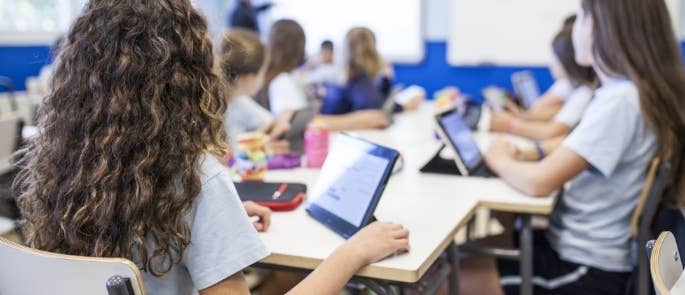
This policy needs to be comprehensive and can therefore be time-consuming to produce. That’s why we’ve worked together with a designated safeguarding lead to create a safeguarding policy template . You can use it in almost any school and adapt certain sections to your specific safeguarding measures where needed.
Throughout this guide, you’ll find a summary of what sections the policy template contains.
Free Example Safeguarding Policy for Schools
What is a Safeguarding Children Policy?
A school safeguarding policy details all the procedures that everyone must follow to protect children’s wellbeing. It is a vital document that all education settings must produce to demonstrate compliance with safeguarding statutory guidance, particularly Keeping Children Safe in Education and Working Together to Safeguard Children.
The scope of safeguarding is wide, as children are susceptible to more risks than ever before. Safeguarding policies in schools must consider all safeguarding risks , from abuse and neglect, through online safety and extremism, to FGM and child exploitation.
Staff who work with children will receive safeguarding training that explains their duties for minimising risk, and the policy will summarise these duties . It will confirm that everyone in the school knows what to do if a safeguarding concern arises and how to act in the best interest of the child.
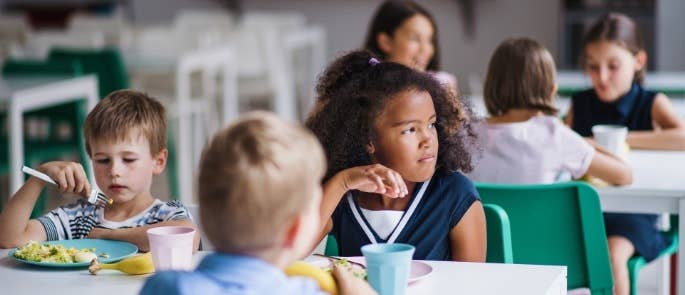
A thorough safeguarding policy will ensure there’s no uncertainty in the school about what must be done to protect children.
What Should a School Safeguarding Policy Cover?
Although the specific details vary from school to school, all education settings must cover the same essential safeguarding procedures in their policy. Our template includes all of these with room to tailor where needed.
The key sections required in a safeguarding policy include the following:
- A policy statement. This acknowledges the school’s responsibilities for safeguarding children and summarises what they will do.
- Summary of safeguarding children , which demonstrates an understanding of how broad safeguarding is and what risks the school will aim to mitigate.
- Legislation and guidance. This section should discuss the various legislative provisions and statutory guidance documents that inform the school’s safeguarding procedures and policy.
- Overview of responsibilities in the school. This section will summarise the duties that staff must fulfil to protect children.
- Child protection procedures, which should summarise the actions everyone will take, including whistleblowing, if they identify a safeguarding concern.
- How the school will safeguard students who are vulnerable to: extremism, child sexual exploitation , FGM and forced marriage , or trafficking, as well as those identified as “at risk”.
- Children missing in education. The school will acknowledge the importance of monitoring attendance and identifying potential signs of safeguarding concerns in unusual absences.
- Online safety and teaching safeguarding. This section should identify online safeguarding risks and what protocol are in place to mitigate these risks, such as filters and monitoring systems. It should also explain how the school’s curriculum includes teaching children about safeguarding risks (i.e. PSCHE lessons).
- Looked after children and liaising with virtual schools. These sections will acknowledge the specific issues around safeguarding looked after children and working with virtual schools.
- Children with SEN and disabilities, which will recognise the additional safeguarding challenges that SEN and disabled children may face.
- How the school will prevent and handle children harming other children, which includes peer-on-peer abuse, sexual abuse, and sexual harassment.
- Confidentiality and record keeping. The school must acknowledge how it will comply with data protection law when handling safeguarding information.
- Working with parents and others with parental responsibilities. This section should detail the importance of partnering with parents to establish a complete safeguarding process. It should also explain how parents will be made aware of and involved in any safeguarding procedures where possible.
- Health and safety , which identifies additional safety risks in the school. For example, school trips, work placements , and the presence of visitors and contractors.
- OFSTED inspection. Part of OFSTED inspections involves demonstrating that the school’s safeguarding arrangements are effective. The policy should therefore explain that the school is familiar with OFSTED’s current framework.
- Monitoring and reviewing the policy. Safeguarding guidance is subject to amendments over time and the school may even undergo changes that affect its procedures. The school should state who will review their policy and how often to reflect any changes.
- Key contacts. This section should list the contact information for key safeguarding staff. For example, the designated safeguarding lead, local authorities, and relevant support networks and organisations.
This list is not exhaustive, but highlights some of the key areas that policies must include in relation to safeguarding.
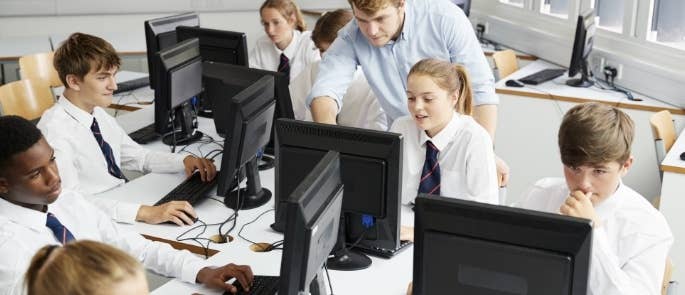
School Safeguarding Policy Template
Our school safeguarding policy template covers all of the above sections in thorough detail. It also provides an opportunity to amend certain sections to reflect your school’s specific procedures.
You can download a PDF copy for free below:
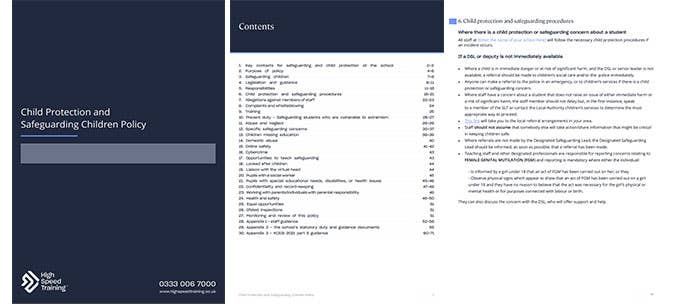
We produced this template together with a qualified designated safeguarding lead (DSL) and wrote it in such a way that it can be used in almost any school. However, your school’s own DSL should still review its contents to ensure it’s entirely relevant to your school’s procedures. They should also tailor the content where necessary.
Having a written safeguarding policy is essential in any education setting. By providing an overview of the school’s procedures for keeping children safe, a policy shows compliance with safeguarding law and reminds everyone of what they must do. Use our free template if you need help producing one, as it covers everything necessary for a comprehensive policy.
What to Read Next:
- What is a Designated Safeguarding Lead?
- How Can Schools Promote Positive Mental Health?
- Child Protection Photography Policy: Free Consent Form Template
- What is the Purpose of School Policies?
- What is Fabricated and induced Illness?
- How to Create an Effective Culture of Safeguarding in Schools
- Child Sexual Abuse: Guidance for Schools
- Safeguarding Flowchart: Procedure for Reporting Concerns
- Safeguarding Checklist for Schools
- Online Safeguarding Children Training Courses
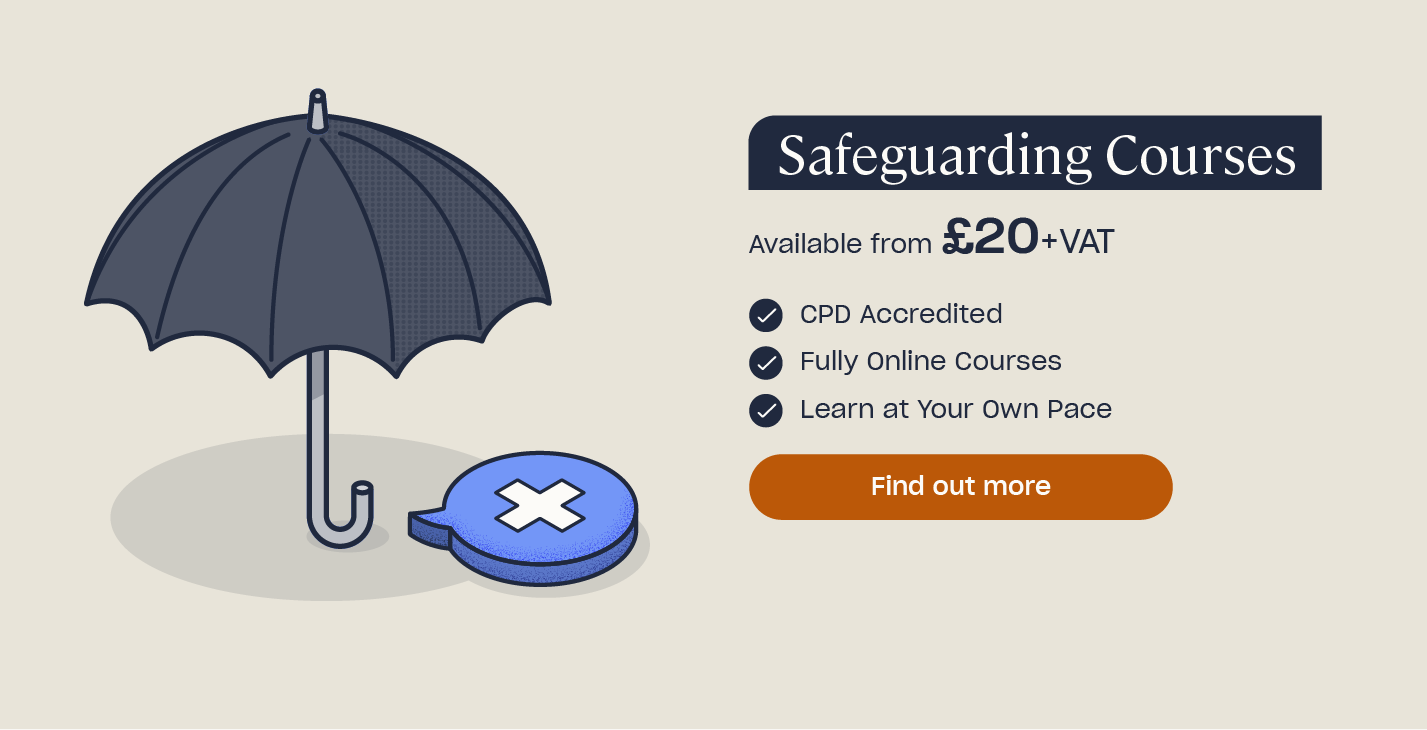
Post Author

Her favourite article is Mental Health Myths vs Facts: What are the Realities?
You may also like
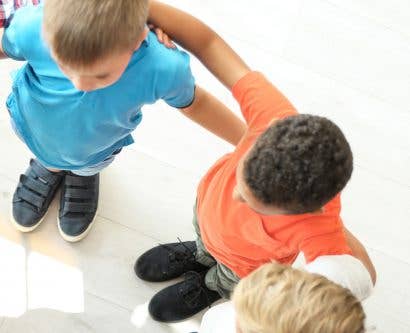
You are using an outdated browser. Please upgrade your browser to improve your experience.

Safeguarding and school trips
Every school trip requires a lot of pre-planning and risk assessment by school staff. But what about staff at the destination? Whether it is a zoo, museum, castle, activity centre or any of our other fantastic organisations who educate and entertain, what is and should be expected of their staff with regards to safeguarding and duty of care?
Keeping Children Safe in Education
According to the Department for Education Statutory Guidance, Keeping Children Safe in Education (KCSIE), “safeguarding and promoting the welfare of children is everyone’s responsibility” and “everyone who comes into contact with children and their families and carers has a role to play in safeguarding children”.
Throughout any typical school, day children come into contact with adults and people in positions of trust who are not directly employed within their own educational setting. This obviously extends even further when a school organises an educational or residential trip. Staff or volunteers who are not appointed by the school itself still have the same duty of care.
Safeguarding policies
KCSIE identifies that all staff members should be aware of the school's staff behaviour policy (sometimes called a code of conduct) which should, amongst other things, include acceptable use of technologies and staff/pupil relationships, and that copies of policies should be provided to staff at induction.
Schools should expect all professionals whom they appoint to have their own set of policies but may want to access copies of the organisation's policies to ensure there is consistent messaging and support.
Safer recruitment
EduCare’s partner Robin Watts, our partner who co-wrote our Child Protection and Safer Recruitment training courses, advises that “strong safeguarding procedures are a huge inhibitor to a potential child abuser looking to gain access to children” . Companies and organisations that facilitate school trips should be clear about their safeguarding policies and take active measures to ensure staff and volunteers are thoroughly checked before they begin working with children.
Health and Safety
The Health and Safety Executive has published a document that tackles the myths about school trips and outdoor learning activities.
In it, they outline that they fully support schools arranging a wide range of out-of-school activities, which can include visits to zoos or museums, trips to the countryside or taking part in challenging and adventurous activities. They want to make sure that mistaken and unfounded health and safety concerns do not create obstacles that prevent these from happening.
Again, the partner organisation should have clear guidance and understanding of H&S and risk associated with the activity.
How can EduCare help?
EduCare for Education ® is our best-selling safeguarding service and is sold on an unlimited basis . This means that schools can extend access to the complete training suite to all staff, support staff and volunteers. This will help provide peace of mind that everyone, no matter of their role or responsibility, is trained to understand safeguarding issues warning signs and understand how to take action. A wide range of organisations and charities use the package of courses within EduCare for Education ® as they work extensively with schools and want to ensure they are trained to the same high level. Speak to one of our expert advisors today to find out more.
Related content:
Educare for education ®.
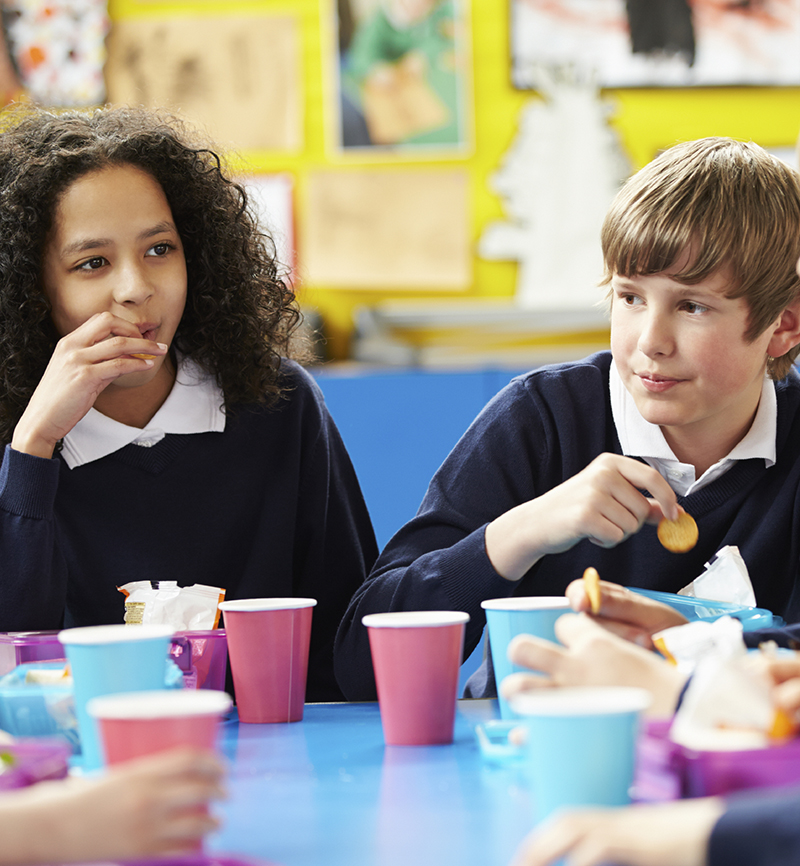
Safer Recruitment

Child Protection
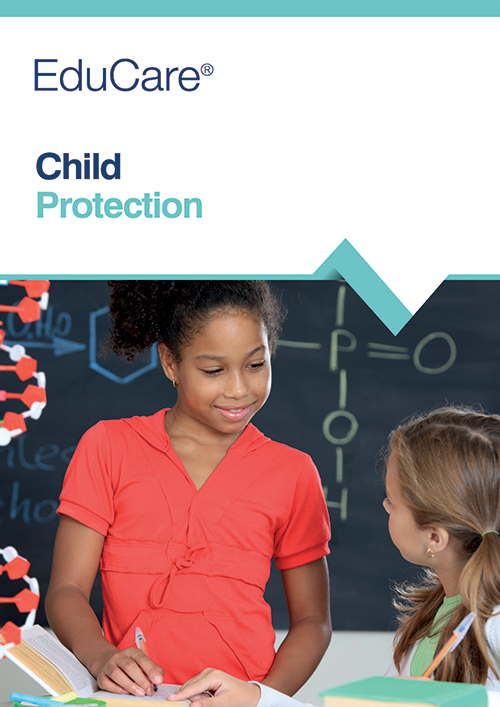
Quick Links
- Glossary of Terms
- EduCare and the GDPR
- Policies, Terms & Conditions
- Accessibility
- Website Terms of Use
© 2022 EduCare - part of Tes Global Services.
Get in touch.
01926 436211
EduCare, Suites 11-16, Pure Offices, Plato Close, Tachbrook Park, Leamington Spa, CV34 6WE


Planning for a safe school trip
Before every school trip, you should ensure that you are carrying out the correct measures such as risk assessments and planning your activities in advance so that everything runs smoothly on the day. Not only will this save you a headache during the trip, but it will make it much easier to keep track of who is who, and to minimise the potential for incidents in which any adult will need to be alone with a child.
In the case of parents and volunteers, it is always wise to arrange a meeting prior to leaving for the trip to find out if the individual has any knowledge of safeguarding. If not, be sure to provide them with a copy of the school’s safeguarding policy to familiarise themselves with. Especially in the case of residential trips, or trips with a high risk that a parent volunteer will need to be left solely in charge of a group of students for any period of time, it is always wise to make sure they take an introductory safeguarding training course .
Our unique online learning management system, administrators can set up new staff or volunteers with access to an online safeguarding training course at the simple touch of a button and monitor their progress too. With immediate 24/7 access to courses and verifiable certificates that are available to print instantly upon successful completion, it’s easier than ever to take charge of last-minute safeguarding training in preparation for safe school trips.
For more information about the training we offer, please click here to browse our online safeguarding training courses for schools.
- WordPress.org
- Documentation
- Learn WordPress
- Members Newsfeed
Safeguarding Children and Young People on School Trips
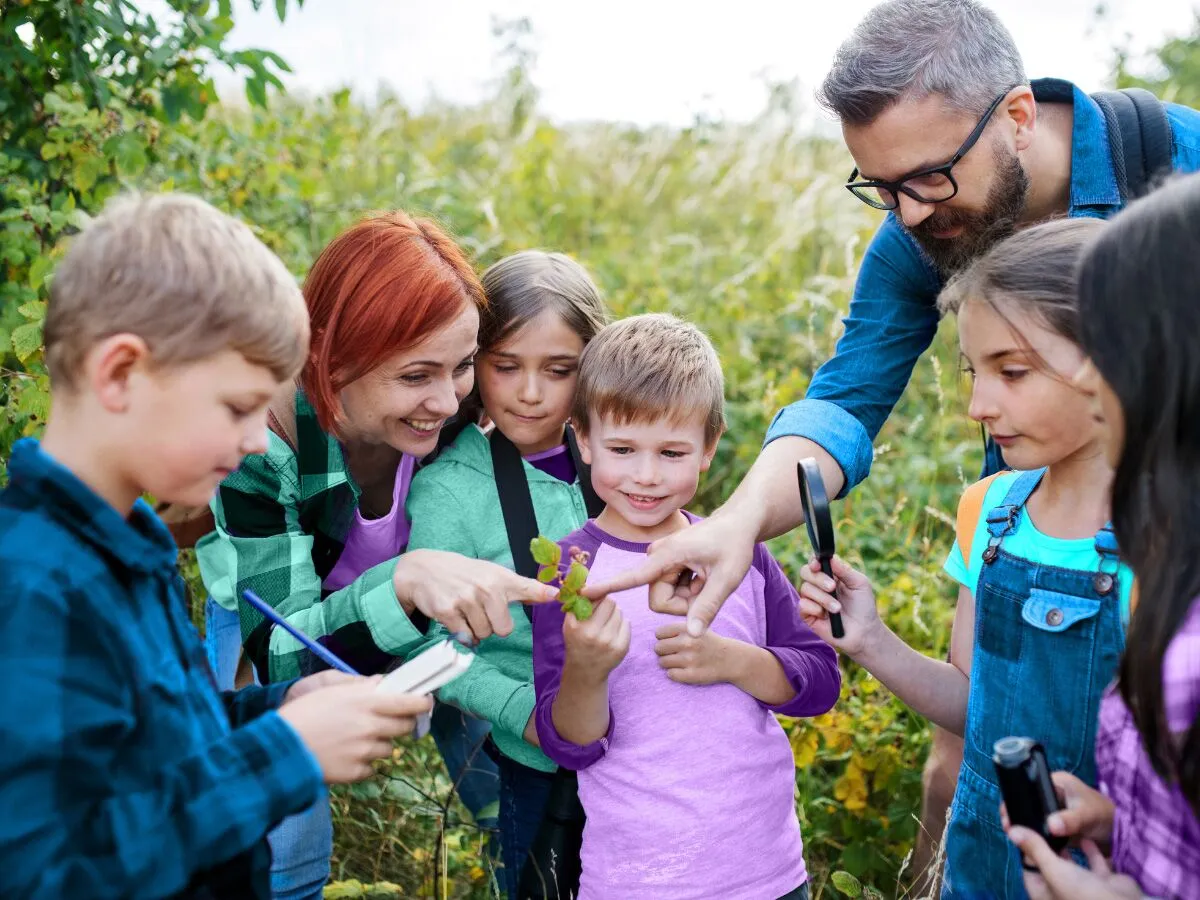
Introduction
School trips are an essential part of a child’s educational experience, providing unique learning opportunities and enrichment beyond the classroom setting. However, ensuring the safety and well-being of students during these outings is a top priority for educators, parents, and guardians. This article will discuss the importance of safeguarding children and young people on school trips and offer practical tips for minimizing risks while enhancing the experience for all involved.
Understanding the Importance of Safeguarding
Safeguarding refers to the measures taken to protect children and young people from abuse, neglect, and exploitation. In the context of school trips, it involves ensuring that students are safe from harm while participating in activities outside of their normal school environment.
Key Safeguarding Strategies for School Trips
1. Risk Assessments
Conducting risk assessments before any trip is an essential step in making informed decisions about planned activities. Identify potential hazards, evaluate their severity, and outline necessary precautions to minimize risk.
2. Parental Consent and Communication
Provide clear information about trip objectives, activities, transportation plans, and supervision arrangements to parents or guardians. Seek written consent from them and ensure that they are aware of their role in supporting their child during the trip.
3. Staff Training and Roles
Teachers and staff should receive training on safeguarding principles, including recognizing signs of abuse or neglect among students. Designate a lead person responsible for safeguarding during school trips who can manage concerns if they arise.
4. Student Preparedness
Educate students about expected behavior during a school trip; this includes respecting guidelines set by staff members, as well as understanding potential risks associated with particular activities.
5. First Aid Provision
At least one member accompanying the group must have an up-to-date first aid qualification. Additionally, all supervisors should be aware of any specific medical needs among students.
6. Supervision Ratios
Ensure appropriate supervision ratios based on group size, age, and nature of activities involved. Younger or more vulnerable children may require additional staffing to ensure proper levels of care.
7. Emergency Plans
Have a clear emergency plan established, including a designated meeting point and communication plan. Share relevant contact information for tour leaders, school staff, local emergency services, and parents with all stakeholders.
8. Transportation
Select suitable transportation options that prioritize safety and security for students—whether using school-owned vehicles or contracting with third-party providers.
9. Monitoring Online Activity
For trips involving internet access, monitor student activity and provide guidelines for responsible digital citizenship to maintain a safe online environment.
Safeguarding children and young people on school trips is an essential responsibility for educators and parents alike. By implementing these key strategies, schools can ensure the well-being of their students while providing them with valuable opportunities to learn and grow outside the classroom.
Related Articles
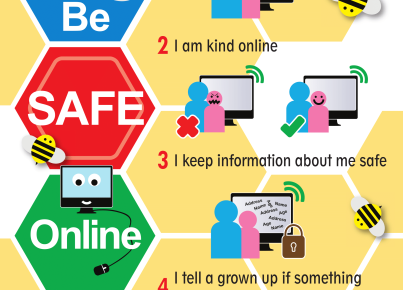
Navigating the Digital World Securely In a world that's increasingly online, staying…

School trips offer students the opportunity to learn beyond the classroom walls,…
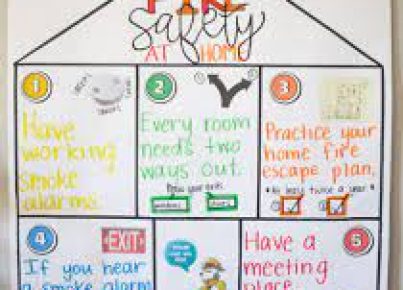
Fire safety is an essential subject for children to learn. Not only…

Pedagogue is a social media network where educators can learn and grow. It's a safe space where they can share advice, strategies, tools, hacks, resources, etc., and work together to improve their teaching skills and the academic performance of the students in their charge.
If you want to collaborate with educators from around the globe, facilitate remote learning, etc., sign up for a free account today and start making connections.
Pedagogue is Free Now, and Free Forever!
- New? Start Here
- Frequently Asked Questions
- Privacy Policy
- Terms of Service
Are you sure you want to delete post?
This post cannot be restored anymore.
- Registration
Don't you have an account? Register Now! it's really simple and you can start enjoying all the benefits!
We just sent you an Email. Please Open it up to activate your account.
I allow this website to collect and store submitted data.
Safeguarding Around the World: Traffic and training
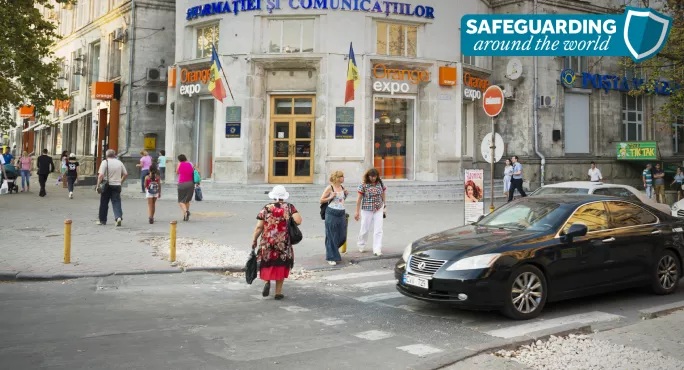
In the latest instalment of the series, we head to eastern Europe to hear from Rob Ford, director of Heritage International School in Chisinau, Moldova, about the various safeguarding challenges his school faces and how it overcomes them - from Soviet-era traffic worries to blanket policies for trips to ensure student safety.
He also explains why all staff are given two weeks of safeguarding training and a refresher every year.
How do you ensure a consistent approach to safeguarding?
One of the hardest challenges in an international school environment relates to the expectations and experiences of different teachers and staff, from different cultures and contexts. They are definitely not uniform.
Often, national standards are not as thorough or up to date as the annual Department for Education’s Keeping Children Safe in Education guidance and this can be a shock when you’ve come from the UK, where safeguarding and child protection are of a high standard.
This is a good reason for international schools to hold an accreditation from an organisation such as the Council of British International Schools (Cobis) or the Council of International Schools, as their safeguarding and child protection standards are high. Certainly, when we achieved our Cobis accreditation, it felt that we finally had a consistent, school-wide approach to safeguarding and safer recruitment.
What are some common safeguarding issues you face?
We have many pupils travelling to school on buses and we need to make sure the adult-to-student supervision ratio is there, and that the drivers have the necessary permissions in place to drive children.
At the school gate, it is about making sure parents and visitors do not come on to campus - our front-of-house staff do a great job of greeting everyone but also dealing with parents who want to drop something off or walk a child into class if they are feeling emotional.
Because our sixth-form A-level students are the only students allowed to leave the campus during the day, the importance of a register across the schools being taken is also crucial - especially as many of our IGCSE students don’t like the fact that they cannot leave the campus during the school day.
To counter this, we have developed a practice where the school counsellor or head of security accompanies some students to a café on the other side of the park as a “wellbeing walk” and this stops them trying to leave the campus. High-profile road-traffic accidents, in which children have been knocked down on the wide old Soviet boulevards, reinforce why we have to do this.
Pick-up at the end of the day can also be a problem because some parents don’t leave their cars and we cannot send students out to them unless they are standing at the gates.
How do you stay aware of emerging safeguarding issues?
Our membership of organisations such as Cobis and the Educational Collaborative for International Schools (ECIS) - which provide regular webinars, conferences and training throughout the year - is helpful to raise new issues.
Our head of pastoral/designated safeguarding lead (DSL) and school counsellor regularly cascade new issues to staff and we also have a designated lead for online learning safety, who makes staff aware of any emerging issues.
As an eTwinning school, we take part in the Digital Learning Week and other digital literacy events. Often, new and emerging safeguarding issues are addressed here. The British Council Schools Education Exchange also has useful webinars and training .
In weekly leadership meetings and the full governors’ meetings, there are the twin standings items of safeguarding/child protection, and health and safety.
We work closely with our international community partners, such as the US Embassy, United Nations and European Union organisations in Moldova, some of which have a number of children placed with us, and they will only accredit and recommend us to their communities if we are at a certain standard in relation to safeguarding.
We share our safeguarding policies and similar documents with the family officers and have regular liaison meetings.
How do you ensure staff training is kept up to date?
We have two weeks’ training in the latter half of August where we go through our safeguarding policy and child protection procedures - and every member of staff has to sign with HR to say that they have attended this annual session.
The DSL takes staff practically through the process of disclosure as well as providing an in-depth look at areas such as signs of abuse, neglect and safeguarding issues that are not obvious.
The online safety DSL will hold similar sessions going through the policy and current issues to be aware of. We often have specialist support, and this academic year, we have a GP and parent from the international community working with families on common issues in open information evenings
We also have everyone trained to a level 1 safeguarding standard, including ancillary staff, using recognised providers, such as ECIS.
And in our weekly teaching and learning sessions, the DSL and school counsellor will take sessions on safeguarding and child protection.
All teaching assistants (TAs) in our primary school and kindergarten take higher-level courses from providers such as the British Council’s Future Learn , about the role of the TA in class, and all governors have training, including to level 3 for the designated safeguarding governor (DSG).
Does the mix of nationalities present an extra challenge when tackling safeguarding issues?
It really does. A recent example of this came at a weekend event where, after dropping donations off at the local dog shelter, my students thought it was OK to just leave. Parents thought it was OK too, but the school still had responsibility to see them off safely. This is why our visits policy, whether it is a trip to the local park or to the US, follows the same procedure as is the case in UK schools.
I often still have to explain to parents and staff why we need a closed campus or why a new cleaner needs to be trained, go through the policy and take a level 1 equivalent test before starting.
With parents, it can be challenging. For instance, a couple of years ago, a student was accused of inappropriate behaviour and during our investigation, a parent of the accused said “boys will be boys”. That wasn’t an easy moment but, being an international school, we make it clear that the values we hold must be adhered to if families want their children educated here, including our international perspective on safeguarding and how we behave towards each other.
What are your processes for following up on incidents?
Our DSL, deputy DSL and school counsellor have an established set of routines and practices around disclosure and the next steps, especially if it requires the involvement of an outside agency. We keep all incidents logged and these are reported on a regular basis to the DSG at the full governors’ meeting, and any serious incident will be raised in the weekly meetings with them. Staff have had to be trained not to try to lead or resolve an issue but to pass it up in the system to a trained/responsible staff member in the school. Their details are displayed on notice boards so everyone knows who they are.
Rob Ford is director of Heritage International School in Chisinau, Moldova
You need a Tes subscription to read this article
Subscribe now to read this article and get other subscriber-only content:.
- Unlimited access to all Tes magazine content
- Exclusive subscriber-only stories
- Award-winning email newsletters
Already a subscriber? Log in
You need a subscription to read this article
Subscribe now to read this article and get other subscriber-only content, including:.
topics in this article

Hostel on Studencheskaya 36/1

Property Policies
Frequently asked questions, how much does it cost to stay at hostel on studencheskaya 36/1, what are the check-in and check-out times at hostel on studencheskaya 36/1, does hostel on studencheskaya 36/1 provide airport transfer services, what amenities and services does hostel on studencheskaya 36/1 have, does hostel on studencheskaya 36/1 have a swimming pool, does hostel on studencheskaya 36/1 have fitness amenities, does hostel on studencheskaya 36/1 provide wi-fi, does hostel on studencheskaya 36/1 have non-smoking rooms, does hostel on studencheskaya 36/1 have a restaurant, is parking available at hostel on studencheskaya 36/1, recommended for you, explore more.
- Car Rentals
- Airport Transfers
- Attractions & Tours
- Flight + Hotel
- Destinations
- Trip.com Rewards
Yekaterinburg-Ekspo

Explore near Yekaterinburg-Ekspo: Where to Stay, Eat, and Visit
Yekaterinburg-ekspo reviews: insider insights and visitor experiences.

The event began in 10.25, in 10.10 the cleaner still has his scene. That is, people were already in the hall, and the scene is not washed yet. Some thousands of people from the whole Sverdlovsk region were invited to the event, but slave ...

EXPO Center
It is a terrible idea to hold concert events there. What the organizers think. Only about financial benefit. Acoustics no. Parking is bad. If the event involves a large number of machines, then ...

Sting concert in Yekate
Beautiful atmosphere in Expo, convenient entrance, wardrobe diverse fast food cafes inside , almost no queues, organizers

Exhibition Center
This exhibition area of the Center Expo year after year becomes all better and better. Close to the city, convenient to get to the car. Good infrastructure. Children's trees, exhibitions and much more. And ...

Ekaterimble exhibition hall
Visited for an exhibition. It looks like a newly built building and is very modern. It feels like a large scale for an exhibition hall in a local city. It is far from the city, and if there is no car, there is only a bus or taxi, and access is inconvenient. When there are events such as large-scale exhibitions, there are cases where free shuttle buses come out from major hotels in the city or subway stations.
Additional Information
- Customer Support
- Service Guarantee
- More Service Info
- About Trip.com
- Terms & Conditions
- Privacy Statement
- About Trip.com Group
Other Services
- Investor Relations
- Affiliate Program
- List Your Property
- Become a Supplier
Urals Mussorgsky State Conservatoire
Urals Mussorgsky State Conservatoire is a musical university in Yekaterinburg, Sverdlovsk Oblast, Russia. The Ural State Conservatory was founded in 1934. The opening of the Conservatory was predetermined by the necessity of training the highly qualified specialists for musical theatres, concert organizations, and educational establishments of the Urals, Siberia and Far East. In 1939 the Conservatory had its first graduates. Many of them became the teachers of the Conservatory and were appointed to the chairs in a number of higher schools, became the leading music art workers of the country. The Ural State Conservatory is one of the biggest higher institutions of music in the country. Its students are awarded honorary titles, like Prize-winners of Russian and International competitions.

Sygic Travel - A Travel Guide in Your Pocket

More interesting places
- Privacy Policy
- STOCK 360° TRAVEL VIDEOS

COMMENTS
Make sure that supervisors are aware of the specific precautions needed on trips to coastal areas and rivers. Talking to pupils about the proposed trip is essential. Pupils may have very individual concerns about the trip or specific aspects of the trip. Stress the importance of safety to all pupils.
Routine visits. These involve no more than an everyday level of risk, such as for slips and trips, and are covered by a school's current policies and procedures. They only need a little extra ...
bus Policy. Equal Opportunities Policy2. Definitions'In loco parentis' means that the group leader of any school trip or educational visit has a duty of. care over the pupils in place of a parent.'School trip' means any educational visit, foreign exchange trip, away-day or residential holiday organised by the school whi.
Some activities may present additional challenges and risks, which make safeguarding more complex. For example, if an event: is organised with other groups, companies and/or individuals who may not be used to working with children and young people. You need to think about the extra measures you will put in place to keep children and young ...
Download our model policy. Our model policy is approved by Forbes Solicitors, and has instructions for you to adapt and make it your own. Model policy: educational visitsDOCX, 217.0 KB. Download. It includes: A proposed visit planning information template for staff to use when seeking approval for educational visits. A risk assessment template.
A school safeguarding policy details all the procedures that everyone must follow to protect children's wellbeing. ... Health and safety, which identifies additional safety risks in the school. For example, school trips, work placements, and the presence of visitors and contractors.
Safeguarding policies. KCSIE identifies that all staff members should be aware of the school's staff behaviour policy (sometimes called a code of conduct) which should, amongst other things, include acceptable use of technologies and staff/pupil relationships, and that copies of policies should be provided to staff at induction.
1. Legal framework. , the following: The Health and Safety at Work etc. Act 1974Mana. DfE (2018) 'Health and safety on educational visits'. SE (2011) 'School trips and outdoor lear. ng activities' DfE (2013) 'Driving school. DfE (2018) 'Charging for school activities'. This policy operates in conjunction with the following school ...
With immediate 24/7 access to courses and verifiable certificates that are available to print instantly upon successful completion, it's easier than ever to take charge of last-minute safeguarding training in preparation for safe school trips. For more information about the training we offer, please click here to browse our online ...
Safeguarding refers to the measures taken to protect children and young people from abuse, neglect, and exploitation. In the context of school trips, it involves ensuring that students are safe from harm while participating in activities outside of their normal school environment. Key Safeguarding Strategies for School Trips. 1. Risk Assessments.
12. Safeguarding (See the School's Child Protection and Safeguarding policy) • It is the responsibility of all visit staff to safeguard the welfare of pupils on educational visits. The school will ensure an adequate staff/participant ratio and gender mix of staff. Where visits
The higher risk level could be related to things such as: Distance from school. Type of activity. Location. A need for staff with specialist skills. Lower-risk trips are those that only include everyday risks, for example slips and trips. This is explained in the DfE's guidance on health and safety on educational visits.
Review safeguarding protocols. All children, regardless of gender, have the right to safety during school trips. Before travel, review safeguarding expectations and procedures, including the system for reporting. ... Formalize the school's positions in policy. Formalize your position around LGBTQ+ affirming practices, such as overnight ...
18th January 2024, 5:00am. Rob Ford. In the latest instalment of the series, we head to eastern Europe to hear from Rob Ford, director of Heritage International School in Chisinau, Moldova, about the various safeguarding challenges his school faces and how it overcomes them - from Soviet-era traffic worries to blanket policies for trips to ...
School types: All • School phases: All • Ref: 4503. Contents. Your role remains strategic. Have a policy in place for off-site activities. Make sure there's an acceptable code of conduct for both trip leaders and young people. Governors can attend educational visits. Our thanks to our associate education expert, Karen Mitchell, for helping ...
Child and youth organizations or trip providers may already have policies, risk management and safeguarding protocols in place to manage risks associated with trips. ... This document provides guidance for managing risk for youth and school trips for both domestic and international travel with specific attention to minors. It is intended for ...
Subscribe to Safeguarding Children on School Trips Legal & useful information. Accessibility Statement; Disclaimer; Timesheets/Payslips & P60s; Webmail; Cookie settings; Find us. 40 Academy Street, ... Model Hospitality Policy for Schools; Educational Visits; School Work Experience Arrangements; Performance Review and Staff Development (PRSD)
Safeguarding 32 Training 33 Behaviour on school travel 34. 3 . Part 4: local school travel policies 37 School travel and school admissions 38 ... • Local authorities' school travel policies should be easy for parents to find and understand (part 4). • Local authorities should have a fair and transparent process so that parents
The policy recognises that the welfare and interests of children are paramount in all circumstances. It aims to ensure that regardless of age, gender, religion or beliefs, ethnicity, disability, sexual orientation or socio-economic background, all children: ensure robust safeguarding arrangements and procedures are in operation.
Discover Hostel on Studencheskaya 36/1 in Yekaterinburg with Trip.com! Find the best room prices and deals. Choose your ideal room based on traveler reviews and ratings for Hostel on Studencheskaya 36/1. ... Property Policies. Check-in and Check-out Times. Check-in: After 14:00. Check-out: Before 12:00. Frequently Asked Questions. How much does ...
Discover Yekaterinburg-Ekspo in Yekaterinburg! See updated opening hours and read the latest reviews. Discover nearby hotels and dining for a perfect trip. Plan your visit to Yekaterinburg-Ekspo on Trip.com.
Urals Mussorgsky State Conservatoire is a musical university in Yekaterinburg, Sverdlovsk Oblast, Russia. The Ural State Conservatory was founded in 1934. The opening of the Conservatory was predetermined by the necessity of training the highly qualified specialists for musical theatres, concert organizations, and educational establishments of the Urals, Siberia and Far East.
Urals Mussorgsky State Conservatoire is a musical university in Yekaterinburg, Sverdlovsk Oblast, Russia. The Ural State Conservatory was founded in 1934. The opening of the Conservatory was predetermined by the necessity of training the highly qualified specialists for musical theatres, concert organizations, and educational establishments of the Urals, Siberia and Far East.